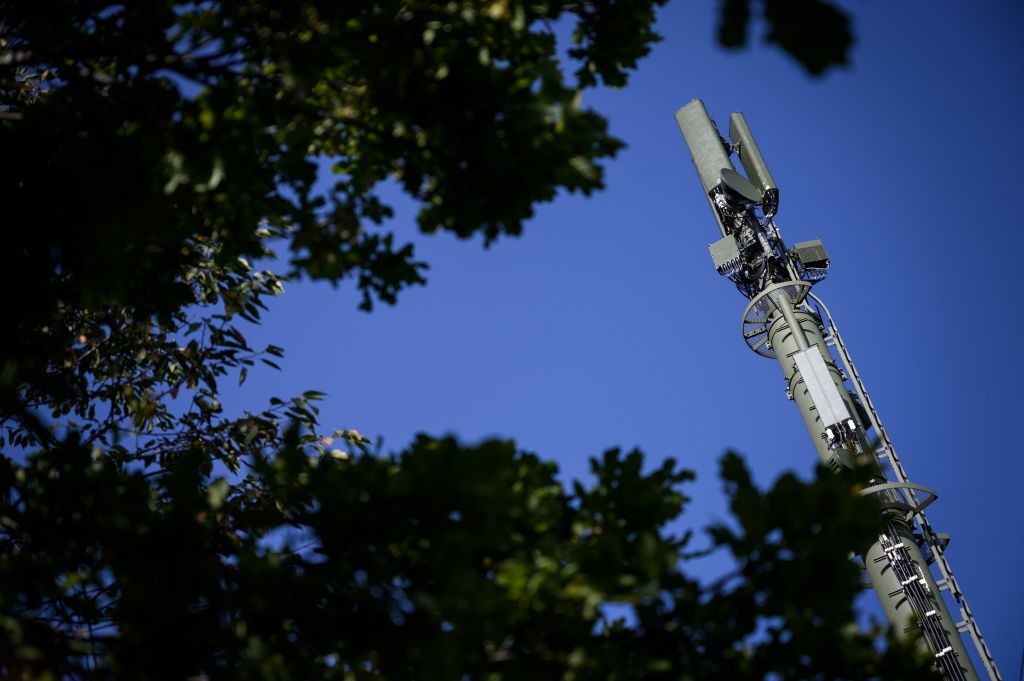
Europe is trailing the US and Asia when it comes to 5G coverage, a new report has warned. This gap could widen further in the coming years, with a spectrum auction in the US having set the stage for an acceleration in coverage across the Atlantic.

The European Commission considers implementing 5G to be a ‘strategic capacity’. Its Shaping Europe’s Digital Future strategy document states that “Europe must invest more in the strategic capacities that allow us to develop and use digital solutions at scale and to strive for interoperability in key digital infrastructures, such as extensive 5G”.
But 5G in Europe lags behind all other regions, according to research carried out on behalf of the European Telecommunications Network Operators’ Association (ETNO).
Only 18 European countries have 5G networks in operation, the report found, meaning that three-quarters of residents and businesses are still not covered. Just 1.3% of Europe’s population used a 5G connection in 2020. By contrast, three out of four Americans now have access to a 5G connection after the rapid growth of US networks in the past 12 months. Digital leader South Korea is still out in front with reported 93% 5G coverage.
Although 4G will continue to dominate when it comes to mobile connections in 2021, the number of people in Europe who have used 5G is expected to jump from 1.3% to just under 7%, the report’s authors Analysys Mason predict.
Business uptake of 5G services is likely to be slower than in consumer markets, however. European telecommunications providers saw their B2B revenue drop by 5.5% to €85bn in 2020 during the pandemic and this is expected to decline by a further 1.2% this year. By contrast, B2C revenue dropped by just 4.2% in 2020, down to €158bn, and is expected to be flat this year. Providers are therefore likely to prioritise their consumer 5G initiatives, the report predicts.
The opposite might be true in countries where the government is backing 5G implementations as part of their economic recovery strategies, the report says. “In some markets, especially those where 5G is part of government-supported industrial strategies, the opposite effect will be seen, with operators redoubling their efforts to work with enterprises, seeking to place telecoms services, particularly 5G, at the heart of business recovery programmes.”
Lise Fuhr, ETNO director-general, said that more needs to be done if Europe is to establish itself as a digital leader. “We support the European Commission in their endeavour to achieve global digital leadership for the EU,” Fuhr said. “This requires a renewed focus on investment in 5G, fibre and digital innovation.
“Digital networks and services are the foundation for Europe’s global competitiveness and green recovery, which will, in turn, empower European citizens”.
Investment in 5G booms in the US
While Europe’s 5G network is still in its infancy, the growth of coverage in the US is accelerating. Last week, bidding closed in an auction of licences to operate in 280MHz of 5G spectrum in the 3.7–3.98GHz band, known as the C-Band, in the US. Overseen by the Federal Communications Commission (FCC), the auction saw bids made for all 5,684 spectrum blocks on offer, with gross proceeds of the auction totalling $80.9bn, far exceeding expectations. Once these networks are up and running, the gap between the two continents could be even more pronounced.
C-Band is particularly appealing for 5G operators as it sits in the middle of the spectrum. Higher frequencies can transmit large amounts of data, but only over short distances, while low frequencies are more suited to long-distance transmission, but with less capacity. C-Band offers a balance of both. T-Mobile already has some C-Band licences since its merger with Sprint, but other major operators such as Verizon and AT&T have few licences for this part of the spectrum so are likely to have been active bidders.
“This auction has exceeded expectations, and, at this point, we are pushing forward to get this critical piece of mid-band spectrum to market quickly, where it will help American consumers tap into next-generation wireless services,” said acting FCC chairwoman Jessica Rosenworcel.
A US boost to Europe’s 5G R&D
While Europe’s 5G infrastructure may not yet be up to scratch, its R&D prowess was recognised by a major US company this week. Qualcomm, which develops chips announced today (1 February) that it plans to open a new 5G R&D centre in France. Co-located in Brittany and Paris, the company hopes it will drive the development of a new wave of 5G technology.
“France already has a leading technical engineering infrastructure in place, so it is a natural fit for this new 5G R&D hub,” said John Smee, vice-president, engineering, at Qualcomm. “The 5G R&D team will be working on advanced systems engineering to help define the future of 5G and beyond – and the new centre is a tremendous opportunity for the individuals involved and for the company.”
R&D has also been a major focus for the European Commission, and last June it announced €700m in funding for 11 projects aiming to “build a first-class European supply chain for 5G hardware”. In the absence of a strong continent-wide network, R&D perhaps offers Europe a chance to carve out a niche for itself in the 5G space.
Home page image by Production Perig/Shutterstock.






